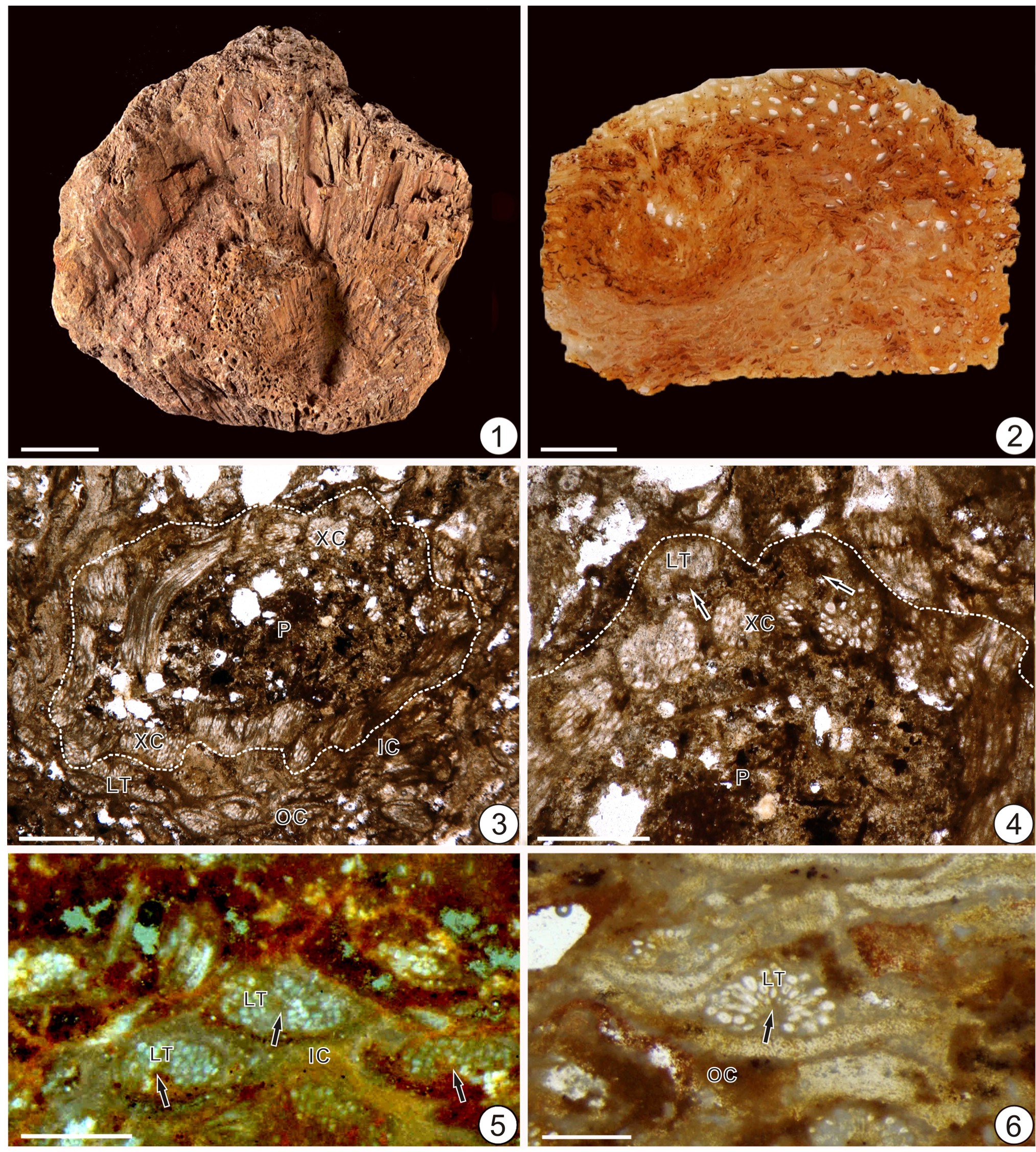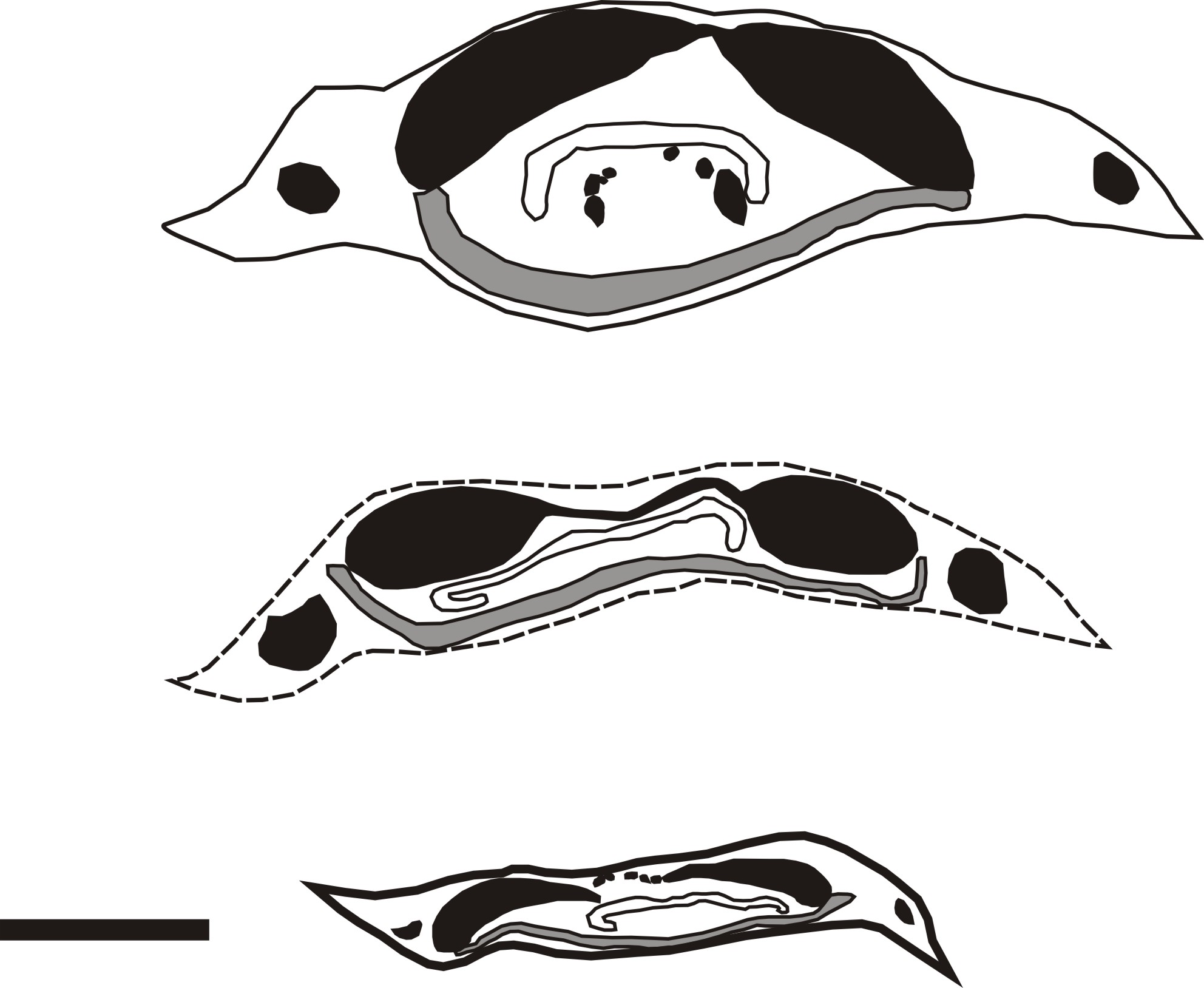The western Liaoning region is known as one of the most significant fossil localities for the Jurassic osmundaceous rhizome remains in the Northern Hemisphere. Recently, a new species of osmundaceous rhizome, Claytosmunda zhangiana sp. nov. was reported with associated fungal remains represented by fungal hyphae in this spectacular osmundaceous rhizome.
The research team led by Prof. WANG Yongdong (Nanjing Institute of Geology and Palaeontology, CAS), Dr. TIAN Ning (Shenyang Normal University), and Dr. JIANG Zikun (Chinese Academy of Geological Sciences) has carried out a systematic study on a structurally preserved permineralized osmundaceous rhizomes from the Jurassic of western Liaoning. This new finding results were published in the international journal Review of Palaeobotany and Palynology.
The results not only further enriches the record of fossil diversity of Mesozoic osmundaceous rhizomes in China, but also contributes to further understanding the evolution of plant–fungal interactions in the Jurassic forest understorey ecosystem.
The fossil material was collected from the Middle Jurassic Tiaojishan Formation in western Liaoning Province, NE China, ca. 160 Ma. Prof. WANG says, “the fossil specimen is represented by a rhizomatous stem consisting of a pith, a dictyoxylic siphonostele, a two-layered cortex, and a mantle of petiole bases”.
A remarkably specialized heterogeneous petiolar sclerotic ring, whose abaxial side is occupied by a dumbbell-shaped thick-walled fiber arch, characterizes this new fossil species. This results helps for exploring the anatomical diversity of petiolar sclerotic rings of the Mesozoic and extant osmundaceous plants.
Additionally, five major types of petiolar sclerotic rings are recognized. Specifically, the fungal remains, represented by branched hyphae and a kind of saprophytes, are found within the fern rhizome. This represents the first report of fungal remains associated with osmundaceous rhizomes in China.
This study was jointly supported by National Natural Science Foundation of China, the Strategic Priority Research Program (B) of the CAS, the Liaoning Revitalization Talents Program, and the State Key Laboratory of Palaeobiology and Stratigraphy (NIGPAS, CAS).
Reference: Tian, N.*, Wang, Y.D.*, Jiang, Z.K., 2021. A new permineralized osmundaceous rhizome with fungal remains from the Jurassic of western Liaoning, NE China. Review of Palaeobotany and Palynology, 290: 104414. Doi: 10.1016/j.revpalbo.2021.104414 (*corresponding author).

Fig.1 Claytosmunda zhangiana sp. nov. from the Middle Jurassic of western Liaoning Province, NE China

Fig.2 Anatomical details of the petiole bases of Claytosmunda zhangiana sp. nov.

Fig.3 Sketch drawing of the petiole bases of Claytosmunda zhangiana sp. nov.

Fig.4 Fungal hyphae found within the permineralized osmundaceous rhizome
